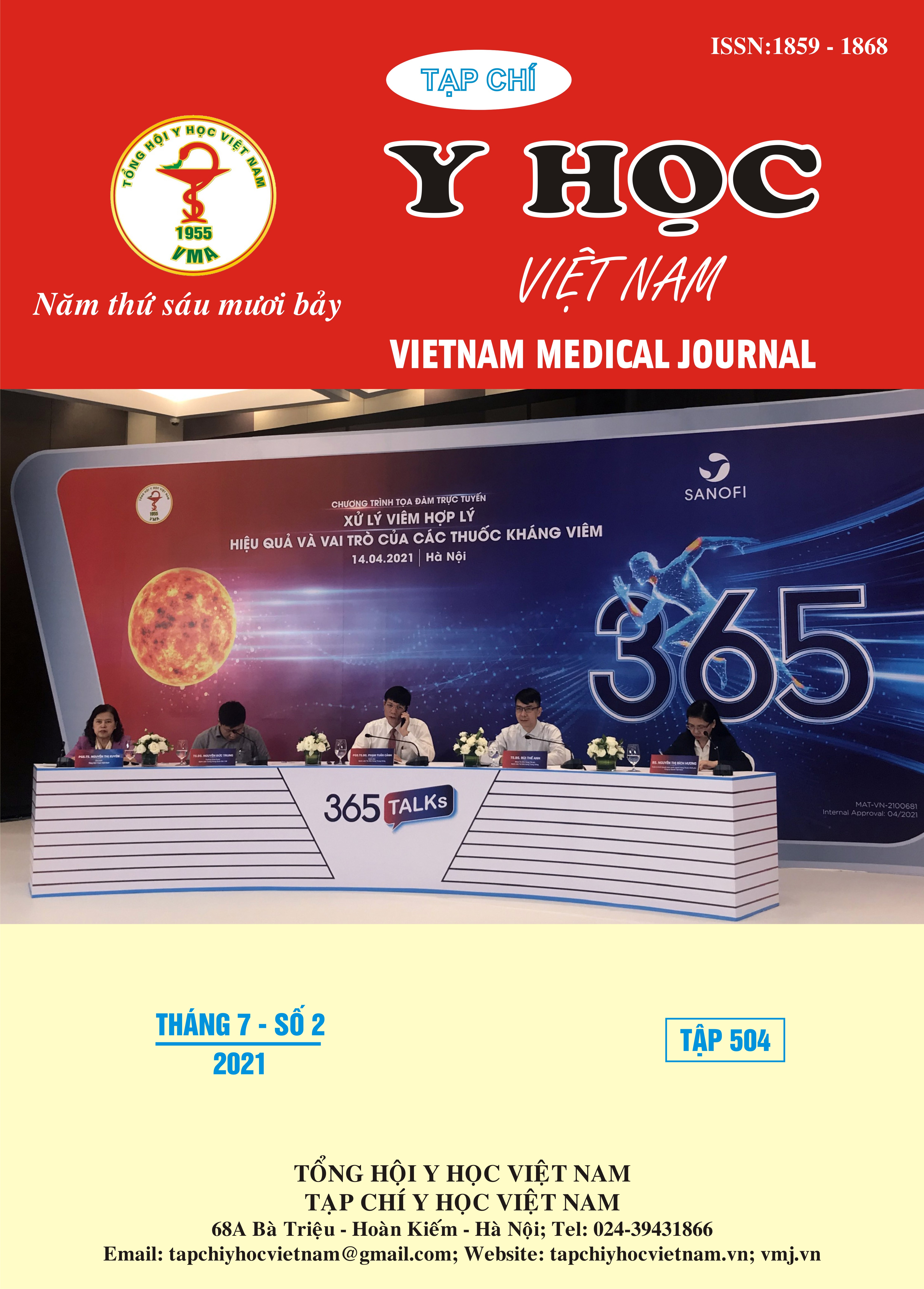CHARACTERISTICS OF HEMOSTATIC DISORDER IN PEDIATRIC SEPTIC SHOCK PATIENTS ADMITTED INTENSIVE CARE UNIT OF THE NATIONAL CHILDREN’S HOSPITAL
Main Article Content
Abstract
Objectives: To determine the clinical and laboratory characteristics of hemostatic disorder in pediatric septic shock patients admitted to the pediatric intensive care unit of the National Children’s Hospital. Subjects and methods: This observational study recruited 56 cases with septic shock between August 2019 and August 2020. Results: The median age was 7.5 months (range, 1-205 months). The frequency of clinical hemorrhage and thrombosis was 19.7% and 1.8%, respectively. All children were abnormal in at least one of the conventional coagulation parameters; included: hypercoagulability (30.4%), hypocoagulability (16.1%), and mixed tendency (53.5%). Conclusion: The incidence of coagulation abnormality in pediatric with septic shock was high, though most children without clinical hemorrhage and thrombosis. Therefore, this highlights the need for a combination of clinical and laboratory symptoms in the early identification of hemostatic disturbance relating to appropriate and timing treatment.
Article Details
Keywords
Septic shock, hemostatic disturbance, hypercoagulability, hypocoagulability
References
2. Saracco P, Vitale P, Scolfaro C, et al. The coagulopathy in sepsis: significance and implications for treatment. Pediatric Reports. 2011;3(4):30.
3. Sharma A. Plasma Fibrinogen and D-dimer in Children With Sepsis: A Single-center Experience. Iranian Journal of Pathology. 2018;13(02):272-275.
4. Toh C.H, Hoots W.K. The scoring system of the Scientific and Standardisation Committee on Disseminated Intravascular Coagulation of the International Society on Thrombosis and Haemostasis: a 5-year overview. Journal of Thrombosis and Haemostasis. 2007;5(3):604-606.
5. Nguyễn Anh Trí. Đông máu ứng dụng trong lâm sàng. Nhà xuất bản Y học, Hà Nội.(2002).
6. Vekaria-Hirani V, Kumar R, Musoke R.N, et al. Prevalence and Management of Septic Shock among Children Admitted at the Kenyatta National Hospital, Longitudinal Survey. International Journal of Pediatrics. 2019, accessed: 09/20/2020.
7. Lê Thanh Cẩm, Bùi Quốc Thắng. Rối loạn đông máu trên bệnh nhân nhiễm khuẩn huyết tại bệnh viện Nhi Đồng I (từ 2008-2010). Tạp chí Y học TP Hồ Chí Minh. 2012; 16(2):54-58.
8. Phùng Nguyễn Thế Nguyên. Rối loạn đông máu trong sốc nhiễm khuẩn trẻ em. Tạp chí Y học TP. Hồ Chí Minh. 2014; 18(1):368-373
9. Andersen MG, Hvas CL, Tønnesen E, et al. Thromboelastometry as a supplementary tool for evaluation of hemostasis in severe sepsis and septic shock. Acta Anaesthesiol Scand. 2014;58(5):525-533.


